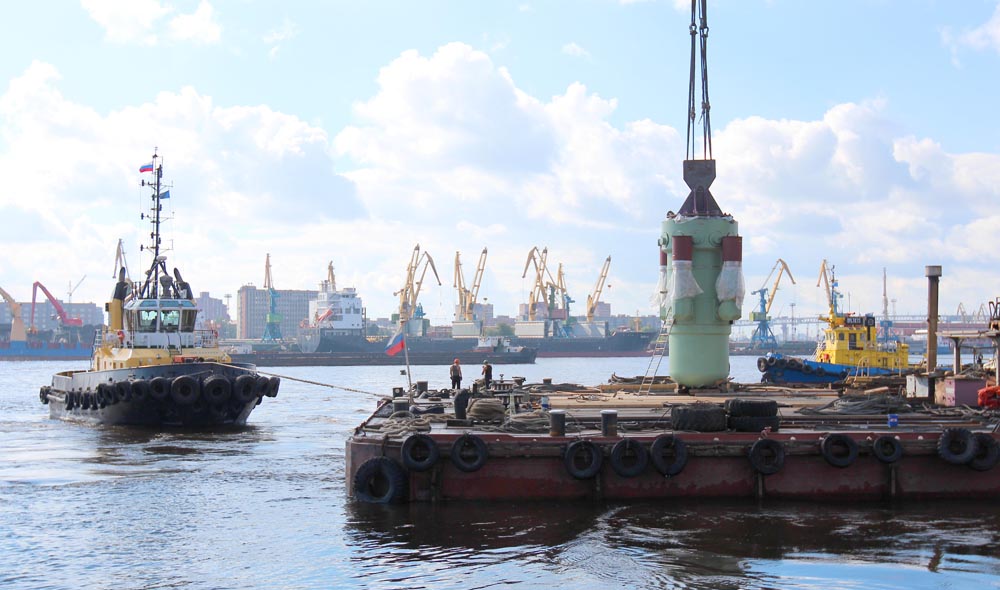
Icebreaker to Get a Reactor
back to contentsInstallation of a propulsion unit is a key operation in the construction of a nuclear icebreaker. The first of the two steam generators of the RITM-200 propulsion unit has already been mounted in its permanent position on the Artktika icebreaker. The generator weighing around 180 tons was loaded onto the vessel with a Demag floating crane. The other steam generator is to be mounted within a month.
“Since it is the first icebreaker of the Project 22220 series, we have had to seek solutions for technological challenges arising throughout the construction period. Engineering solutions are especially difficult to find for such complicated operations as the installation of a reactor, the nuclear icebreaker’s heart. Our shipyard has a chance to get new experience and skills,” said Alexei Kadilov, CEO of the Baltic Shipyard.
RITM-200 is the most advanced reactor for nuclear-powered ships. Developed by Rosatom’s subsidiary OKBM Afrikantov, it is a basic component of the icebreaker’s propulsion unit comprising two reactors, each with a thermal capacity of 175 MW. RITM-200 reactors are produced entirely by the companies of Rosatom’s nuclear engineering division covering the entire development process from design to manufacturing and delivery to the customer.
The new propulsion unit is unparalleled for its compact size and cost efficiency. Its energy-efficient integrated design provides for the placement of core equipment inside the steam generator shell and makes the unit twice as light, half more compact and 25 MW more powerful than current icebreaker reactors of the KLT series. The reactor design enables the icebreaker to be used both in deep Arctic waters and river estuaries and improves its icebreaking speed and other performance indicators.
The reactors have a service life of 40 years and are protected by a containment made of steel, water and concrete. Inside the containment, there is a modular reactor core with low-enriched uranium-235 as fuel. Fresh fuel is loaded once every seven years. A diesel-driven icebreaker would spend 540,000 tons of diesel fuel for the same time in operation. A thermal power station of the same capacity would burn 1 million tons of coal to provide power for a town with the population of 30,000.
ZiO-Podolsk (a subsidiary of Rosatom’s AtomEnergoMash) is now manufacturing propulsion units for the Sibir and Ural icebreakers.
As reported earlier, the Project 22220 nuclear flagship was floated out on 16 June 2016. The vessel is being fitted out afloat, with Sibir and Ural icebreakers being completed on the stocks.




